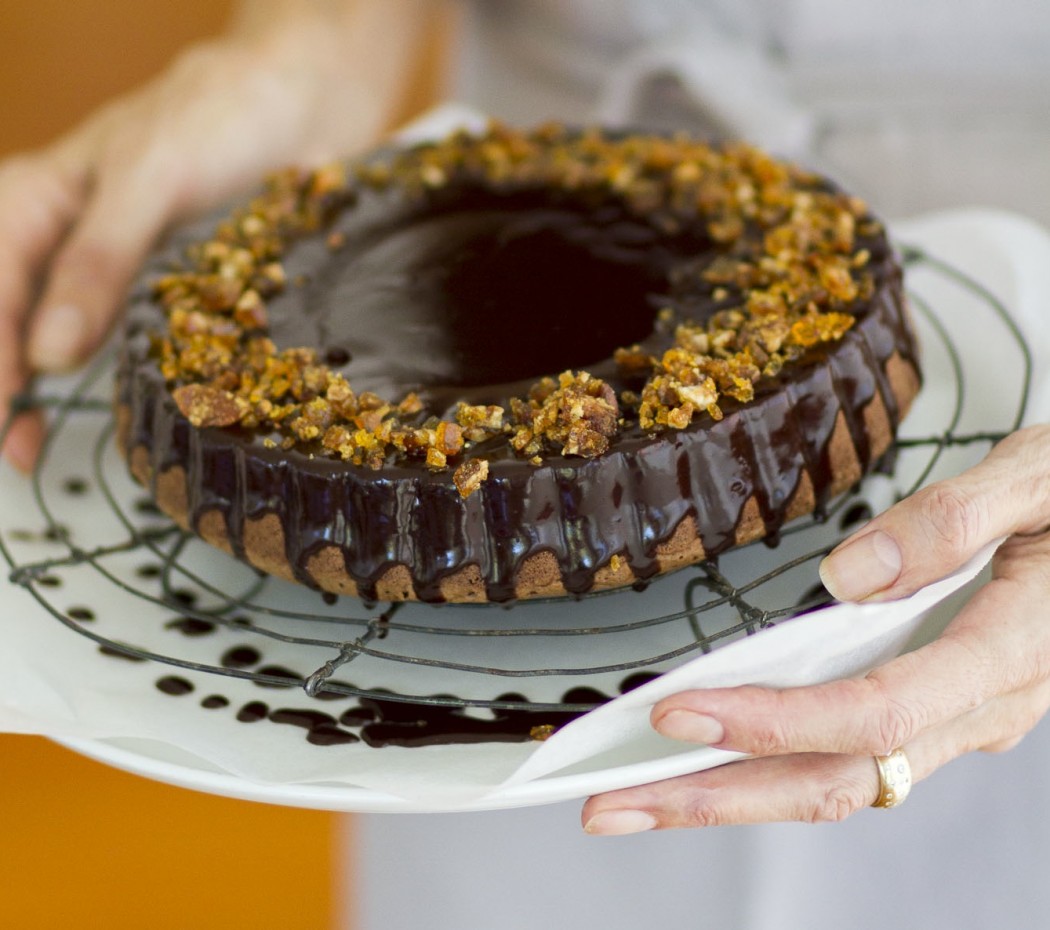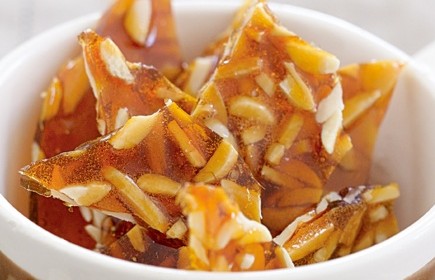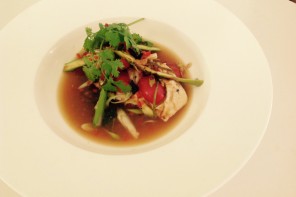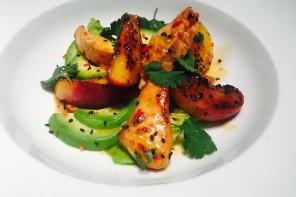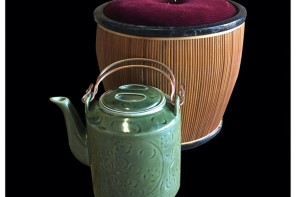If you want to produce a mouth-watering dessert for Easter, try making this deliciously moist flourless almond, apple and chocolate cake, writes Belinda Jeffery.
This lovely cake is a firm favourite of mine. It’s light, but richly chocolatey and very moist. I love that the recipe has no additional sugar other than that in the chocolate and apple, and that it’s dairy and wheat-free. Although I hasten to add that for the photograph I glazed the cake with ganache, which is made with butter; however, I’m just as likely to serve it with a dusting of icing sugar and couple of spoonsful of berries. The original recipe for the cake came from Dov Soconi, an exceptionally talented chef and restaurateur, and although I’ve fiddled about with it, all credit should go to him.
4 eggs, separated
120g caster sugar
120g good-quality dark chocolate, melted and cooled to room temperature
120g almond meal
1 medium-sized (approx. 170g) sweet apple (pink lady, gala or fuji, are ideal), cored and coarsely grated
1 ½ teaspoons vanilla extract
Pinch of salt
Ganache, optional:
125g good-quality dark chocolate, in small chunks
60g unsalted butter, in chunks
Almond praline, for sprinkling, optional (recipe follows)
Softly whipped cream, for serving, optional
Preheat your oven to 170C. Lightly butter a 20cm round cake tin, line the base with buttered baking paper, dust it lightly with wheat-free cornflour or plain flour, and set it aside. (The tin I used for the cake in the photograph has a lovely fluted pattern embossed on the base, and is just a bit larger – 21 cm x 5 cm.)
Put the egg yolks and caster sugar into a medium-sized bowl, and beat them with a hand-held electric mixer for about 5 minutes, until they’re pale, thick and creamy-looking (you can do this in a stand mixer, if you prefer.)
Scrape the cooled chocolate into the yolk mixture, along with the almond meal, apple, and vanilla, and gently mix them all together.
In a clean, dry bowl, with clean, dry beaters, whip the egg whites and salt on medium speed just until they hold soft peaks. Quickly stir a third of the whites into the chocolate mixture to lighten it, then gently fold in the remaining whites in two batches. Scrape the batter into the prepared tin, shaking it gently to level it out.
Pop the tin in the oven, and bake the cake for about 40 minutes, or until the centre feels slightly springy when gently pressed. Transfer the cake to a cooling rack, leave it in the tin for 5 minutes, then carefully invert the cake onto the rack, remove the tin and paper, and leave it to cool completely.
While the cake is cooling, make the ganache. To do this, put the chocolate, butter and 25ml cool water into a small, heavy-based saucepan over low heat. Let the chocolate and butter melt, stirring them regularly, until the ganache is smooth. (I use a small, flat sauce whisk for this, as it gets right into the corners of the pan, where the chocolate tends to clump a bit.) The most important thing to keep in mind is not to let the ganache get too hot and boil; if it does, it becomes oily and grainy and there’s not much chance of salvaging it. Once it’s silky smooth, take it off the heat and leave it to cool until it’s barely warm and a thick pouring consistency.
Once the cake is cool, pour the ganache evenly over the top so it trickles down the sides. I don’t cover the sides completely as I like the look of the rivulets of chocolate running down them. Leave the ganache to set. If the weather is warm and the ganache won’t set firmly, put the cake, uncovered, in the fridge for a short time so the quick burst of chilled air sets it (it can also dull the sheen if it’s in too long so you need to keep an eye on it.)
If you’re using the praline, just before serving the cake, remove some shards from the freezer and coarsely crush or chop them. Sprinkle it over the ganache, then serve the cake as is, or with softly whipped cream.
Makes 1 slim cake (serves 8)
P.S. Store any leftover cake in the fridge. To do this, put the cake, uncovered, in the fridge until the ganache is quite firm, then cover it in plastic wrap. Before serving, remove the wrap and return the cake to cool room temperature so the ganache regains its sheen.
ALMOND PRALINE
You won’t actually need the full quantity of praline in this recipe, however as it’s fiddly to make smaller amounts, I always do the lot and store it in the freezer where it keeps beautifully for months ready to add it’s sparkle to all sorts of other puddings and cakes.
1 cup (220g) caster sugar
½ cup (125 ml) cold water
60g flaked almonds
Line a shallow baking tray with baking paper and sit it on a board or thick tea towel.
To make the praline, put the sugar and water into a small saucepan over medium heat. Stir constantly until the sugar dissolves, then stop stirring, increase the heat and bring the mixture to the boil. Boil it undisturbed, washing down the sides occasionally with a brush dipped in water to dissolve any sugar crystals. The mixture will slowly change from being liquid to syrupy, with lots of lazy bubbles breaking all over the surface.
From here on in you need to watch it like a hawk as it changes colour quite rapidly. As soon as it turns light amber, add the almonds and swirl the pan to mix them in (be careful as it may froth a bit at first). Continue to cook until it’s deep golden brown, then immediately take the pan off the heat and carefully pour the mixture onto the prepared baking tray. Using an oven mitt to protect your hands, tilt the tray gently to help spread the mixture even further. (Be careful doing this, as both the praline and tray are very hot.) Leave the praline to cool and harden, then break it into shards.
To store the shards, layer them in an airtight container between sheets of baking paper or freezer wrap to stop them sticking together. Pop them in the freezer until you need them. The praline shards can be used as is, broken into smaller pieces, or crushed.

